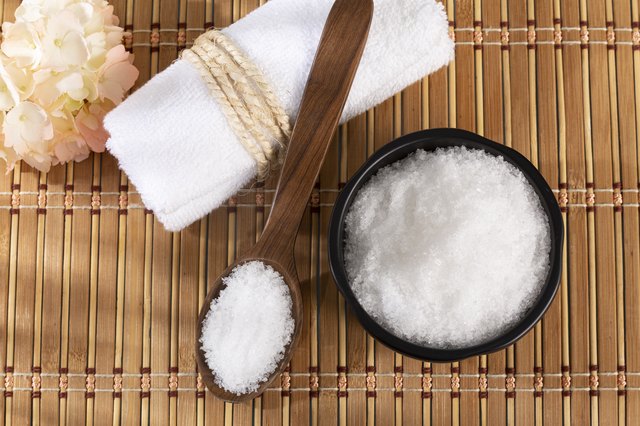The biceps brachii, often referred to as the biceps, is one of the most well-known and prominent muscles in the human body. Located in the upper arm, the biceps play a significant role in various everyday movements and activities. In this article, we will delve into the anatomy, function, and exercises related to the muscles of the biceps.
Anatomy of the Biceps Brachii:
The biceps brachii is a two-headed muscle consisting of a long head and a short head. These heads originate from different points on the scapula (shoulder blade) and merge to form a common tendon, which attaches to the radius bone in the forearm. The muscles of the biceps are enclosed by a tough connective tissue sheath known as the brachial fascia.
The function of the Biceps Brachii:
The biceps brachii performs several essential functions, including:
a. Elbow Flexion: One of the primary functions of the biceps is to flex the elbow joint, bringing the forearm towards the upper arm. This motion is commonly used in activities such as lifting objects, bending the elbow, or performing biceps curls during strength training exercises.
b. Supination: The biceps also contributes to forearm supination, which is the rotational movement that allows the palm to face upward. This action is crucial for tasks like turning a doorknob or using a screwdriver.
c. Stabilization: The biceps plays a stabilizing role during certain movements, such as lifting heavy objects or maintaining a strong grip.
Strengthening the Biceps:
To enhance the strength and appearance of the biceps, targeted exercises can be performed. Some effective exercises for the biceps include:
a. Biceps Curls: This classic exercise involves curling a weight (such as dumbbells or a barbell) upward while keeping the upper arm stationary. Biceps curls can be performed in various positions, such as standing, seated, or with alternate arm curls.

b. Hammer Curls: Hammer curls are similar to biceps curls but with a slight variation in grip. The dumbbells are held with a neutral grip (palms facing each other) instead of a supinated grip (palms facing upward), targeting slightly different muscle fibers.
c. Chin-Ups/Pull-Ups: These compound exercises engage multiple muscles, including the biceps. They involve pulling the body upward by gripping a bar and lifting the bodyweight. Chin-ups involve a supinated grip, while pull-ups use a pronated grip (palms facing away).
d. Preacher Curls: This exercise is performed on a preacher curl bench, which isolates the biceps by minimizing the involvement of other muscles. It helps focus on the biceps and improves their strength and definition.
Maintaining Biceps Health:
Proper care and maintenance are essential for healthy and functional biceps. This includes:
a. Warm-up: Prior to engaging in intense physical activity or weightlifting, it is important to warm up the muscles to reduce the risk of injury. Perform dynamic stretches and light exercises to prepare the biceps and surrounding muscles.
b. Balanced Training: Incorporate exercises that target both the biceps and the opposing muscle group, the triceps, to maintain muscular balance and prevent muscle imbalances.
c. Rest and Recovery: Allow sufficient rest periods between biceps-focused workouts to promote muscle recovery and prevent overuse injuries.
d. Proper Nutrition: A balanced diet that includes an adequate amount of protein, along with other essential nutrients, is crucial for muscle health and growth.
In conclusion, the muscles of the biceps is a powerful muscle group that plays a crucial role in arm movement and strength. Understanding its anatomy, function, and how to effectively train and strengthen the biceps can contribute to overall fitness and physical well-being. By incorporating targeted exercises such as biceps curls, hammer curls, chin-ups, and preacher curls, individuals can develop stronger and more defined biceps.

It is important to emphasize the significance of maintaining proper form during exercises to prevent injury and maximize results. Additionally, maintaining a balanced training routine that includes exercises for both the biceps and the opposing muscle groups, such as the triceps, is essential for overall muscle balance and joint stability.
Rest and recovery are equally important aspects of biceps training. Allowing adequate time for muscle recovery and avoiding overuse injuries is crucial for long-term progress. It is recommended to schedule rest days between biceps-focused workouts and to listen to your body’s signals for rest and recovery.
In addition to exercise, muscles of the biceps proper nutrition and hydration are vital for optimal muscle health. Consuming a balanced diet rich in protein, along with other essential nutrients, supports muscle growth, repair, and overall well-being.
Lastly, it is important to consult with a healthcare professional or a qualified fitness trainer before starting any new exercise program, especially if you have pre-existing medical conditions or concerns.
By applying the knowledge gained about the biceps brachii, individuals can enhance their understanding of this muscle group and design effective training programs to achieve their fitness goals. Whether it’s improving strength, developing muscle definition, or simply maintaining overall arm functionality, a targeted approach to biceps training can lead to remarkable results and contribute to a healthier and more active lifestyle.
















